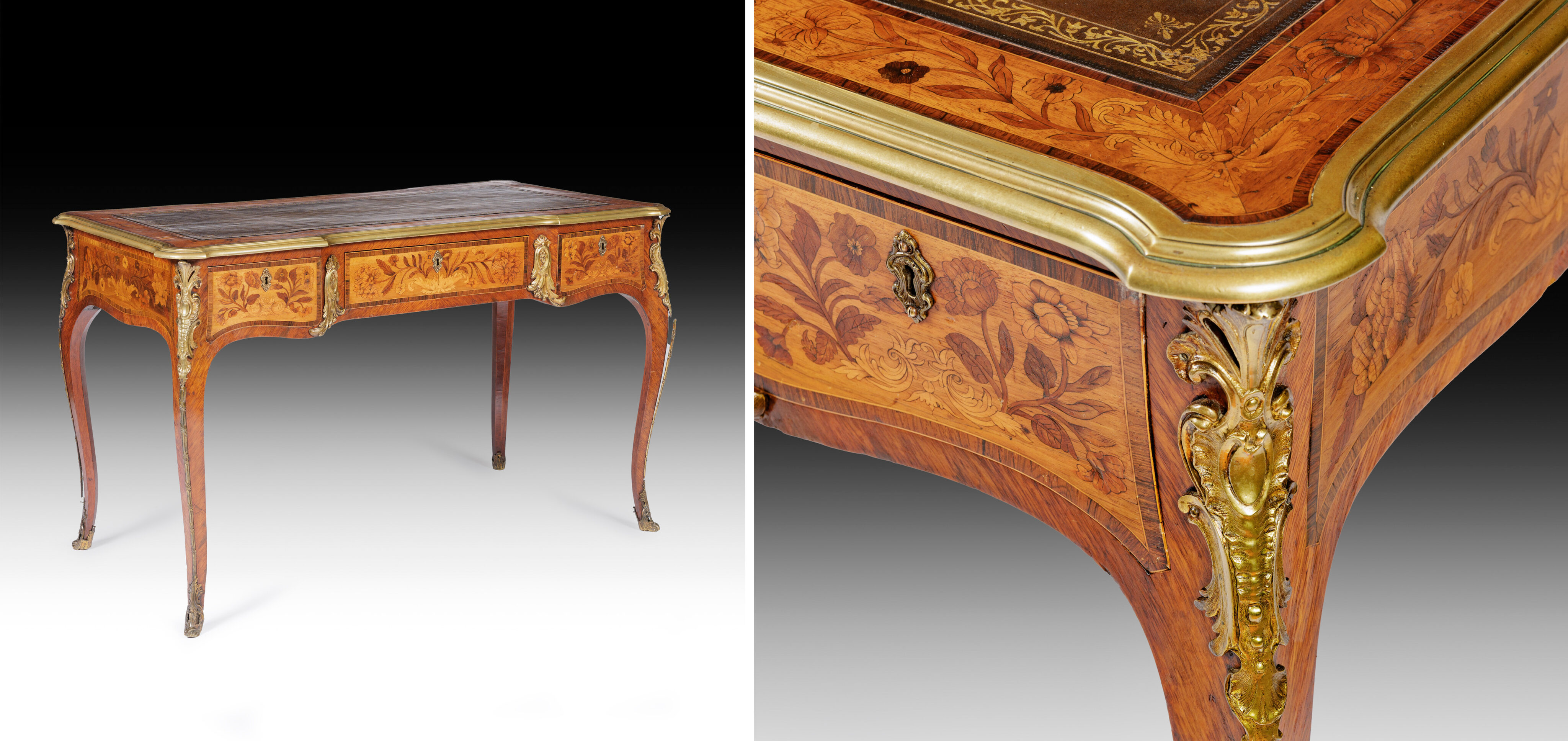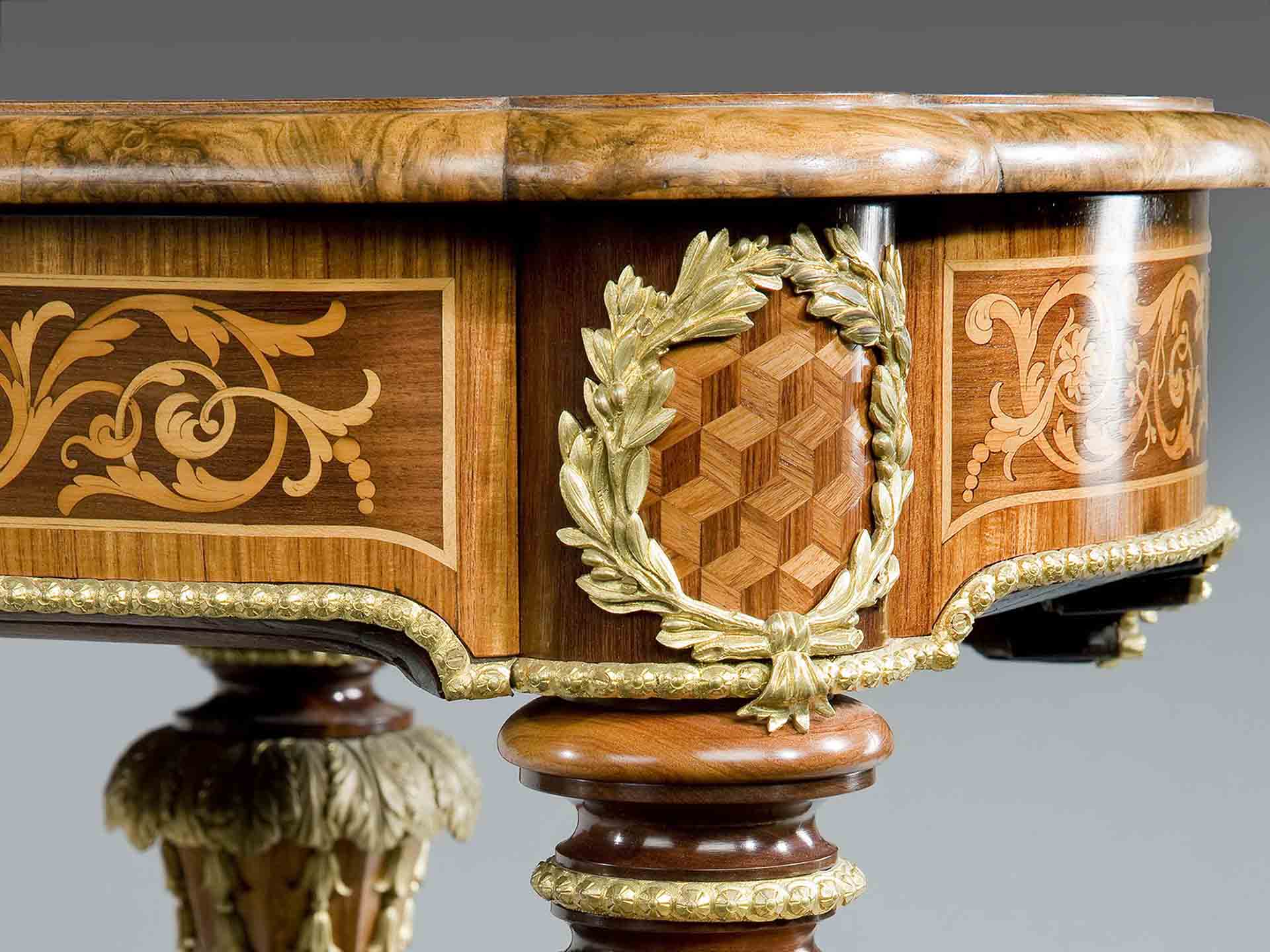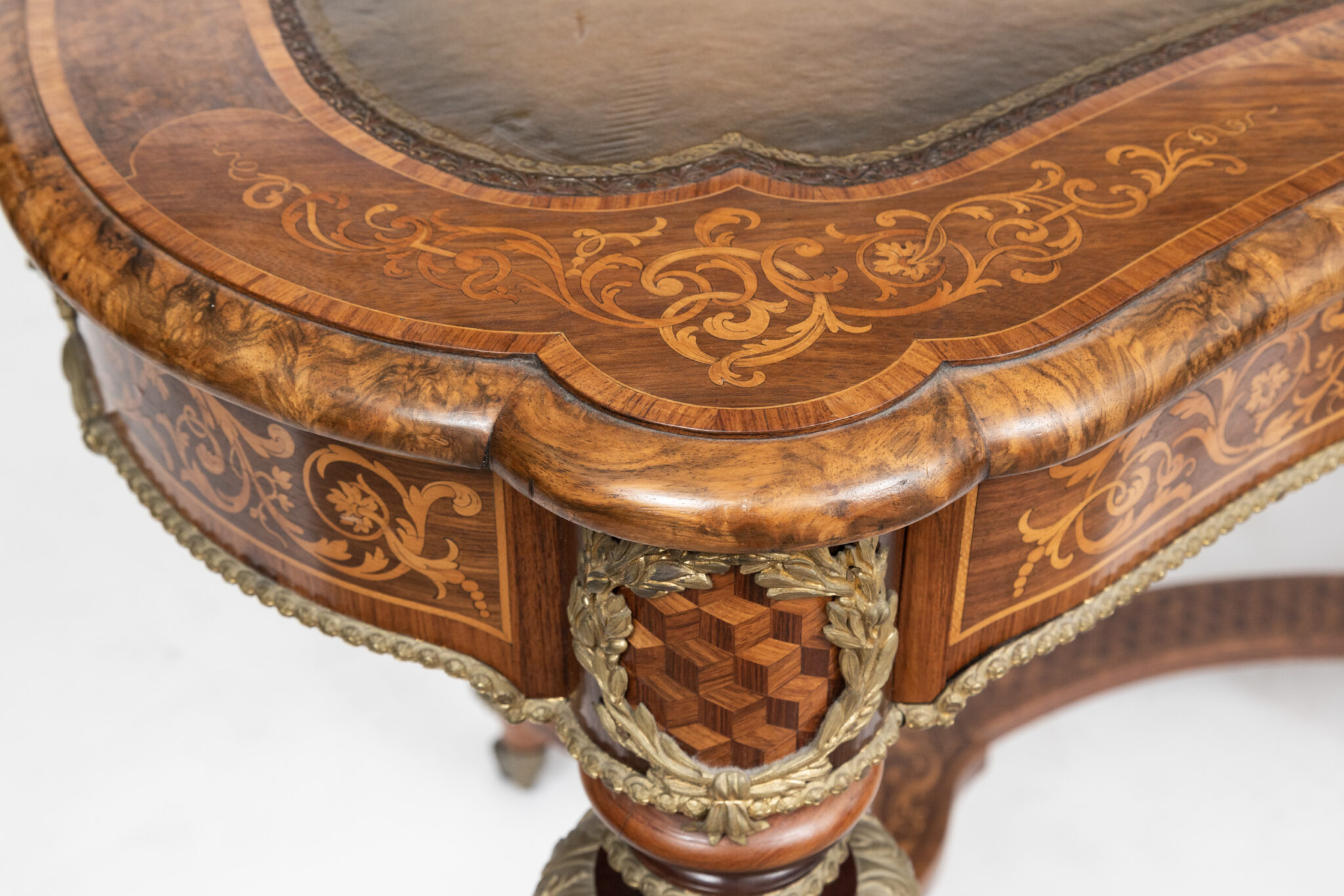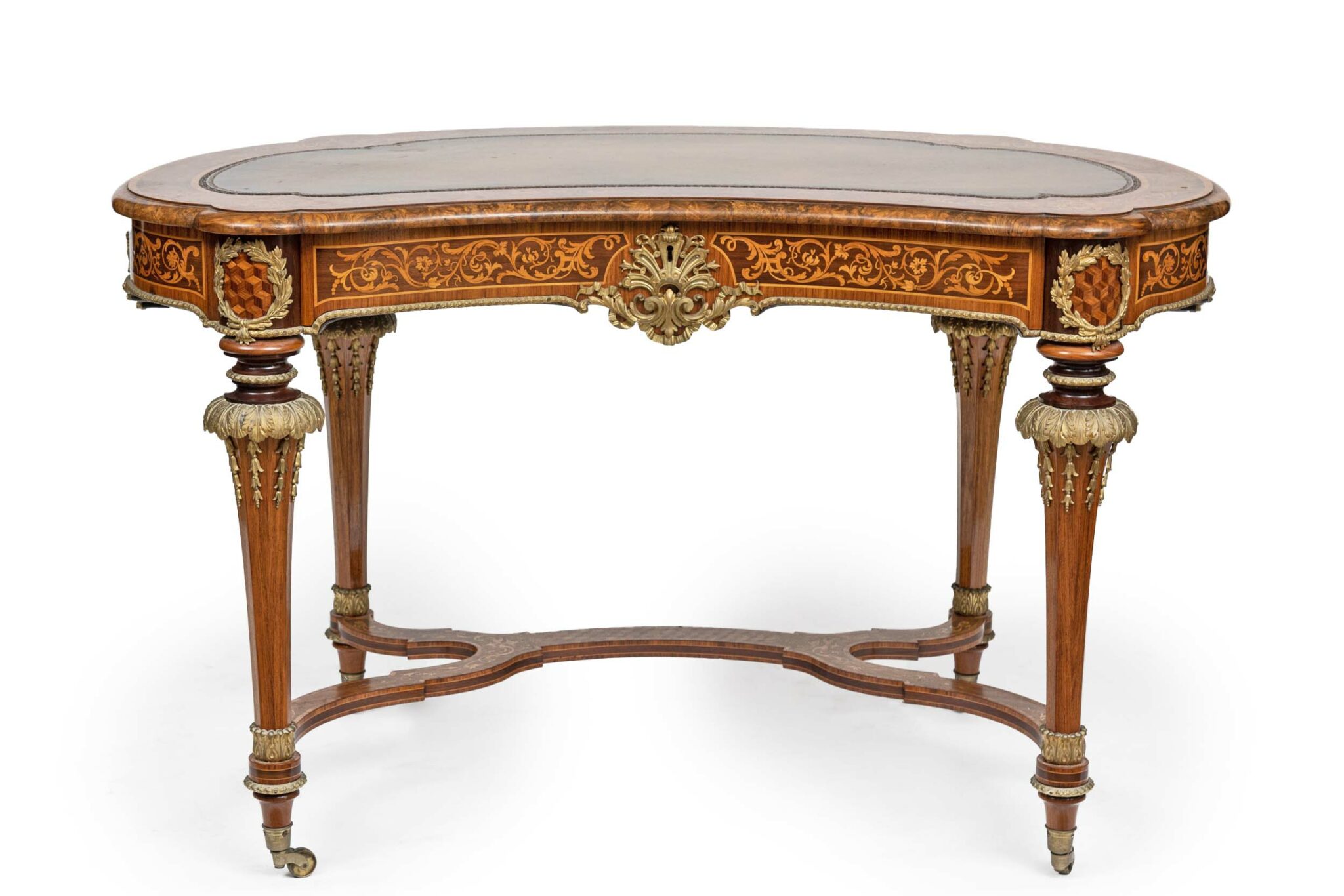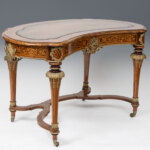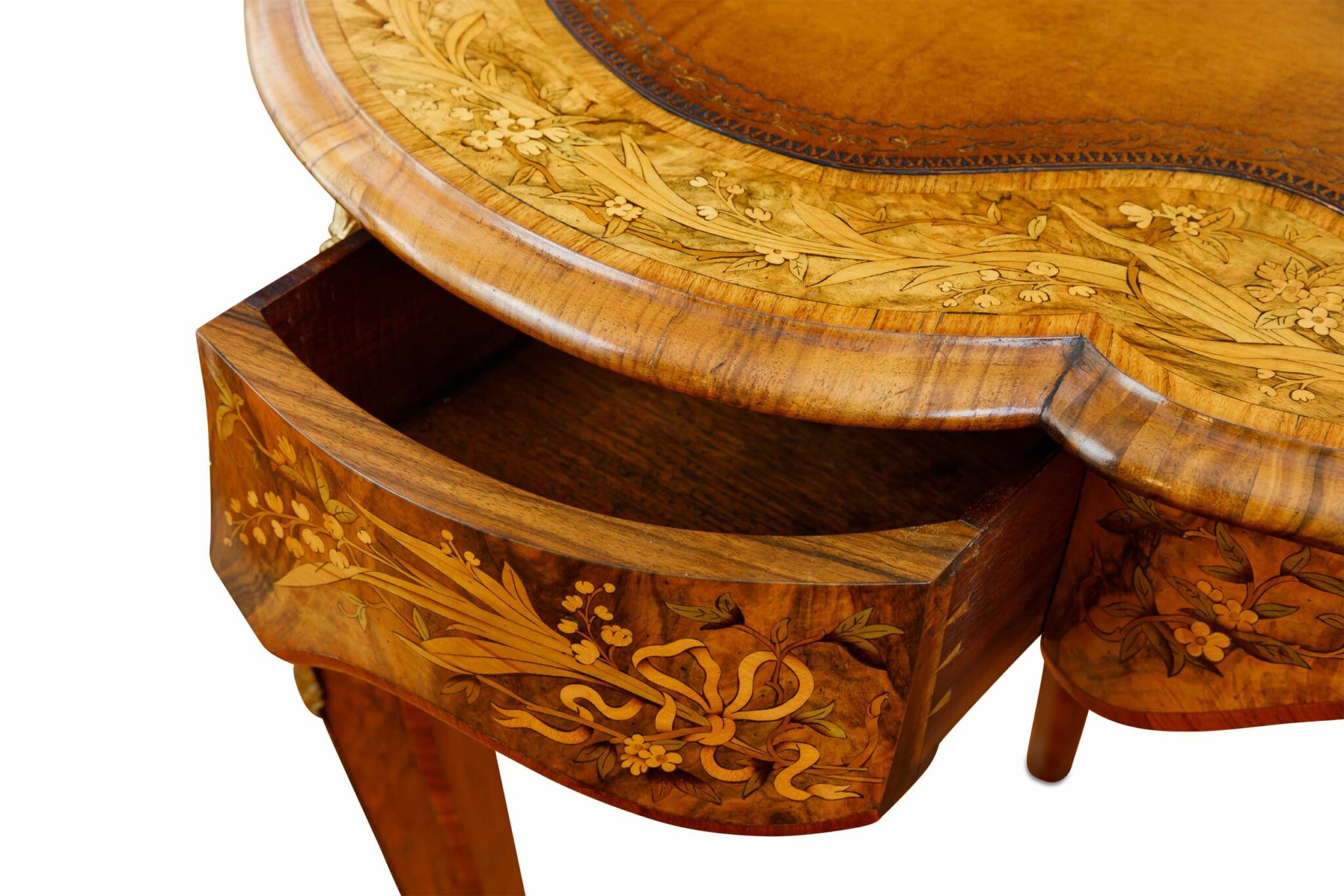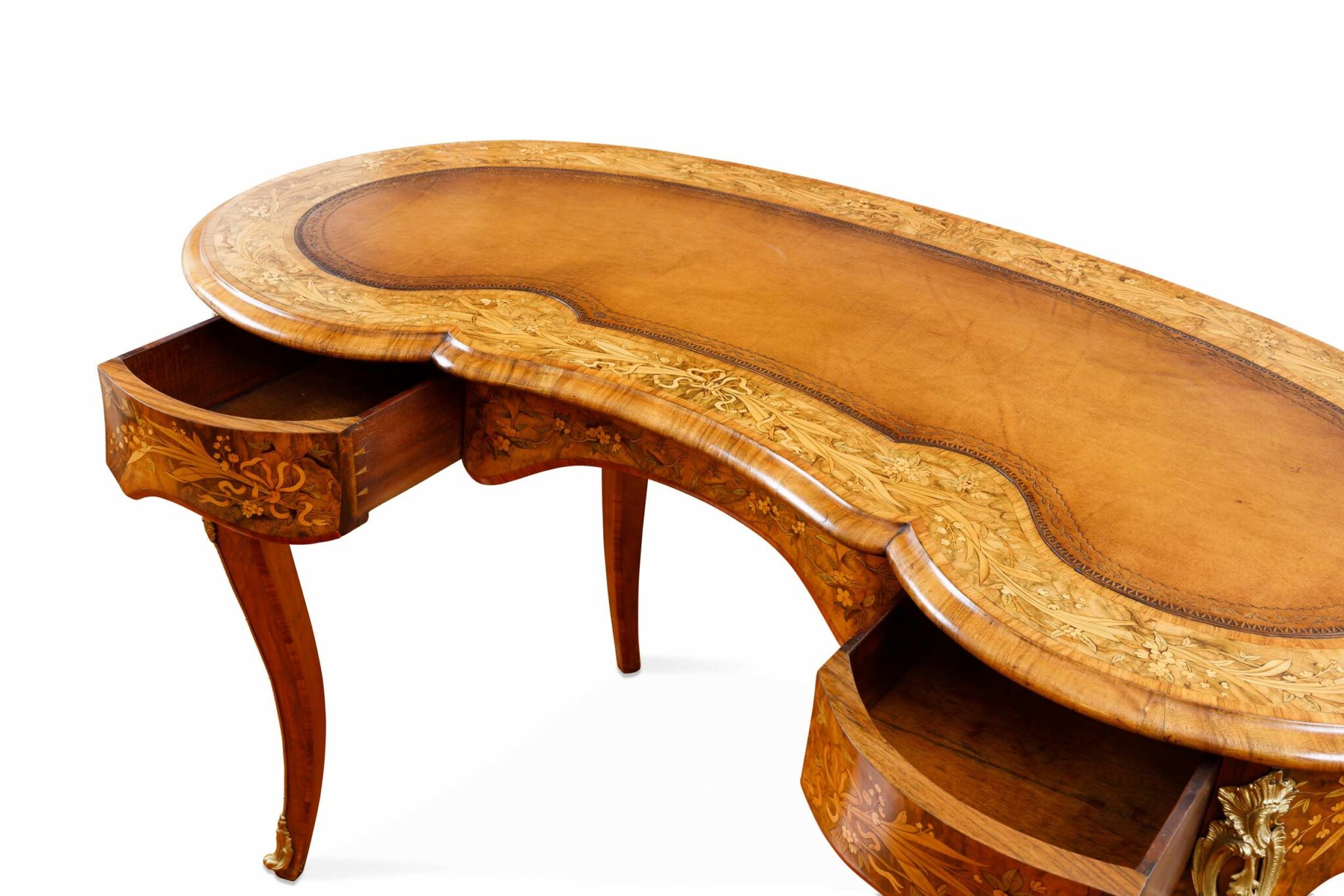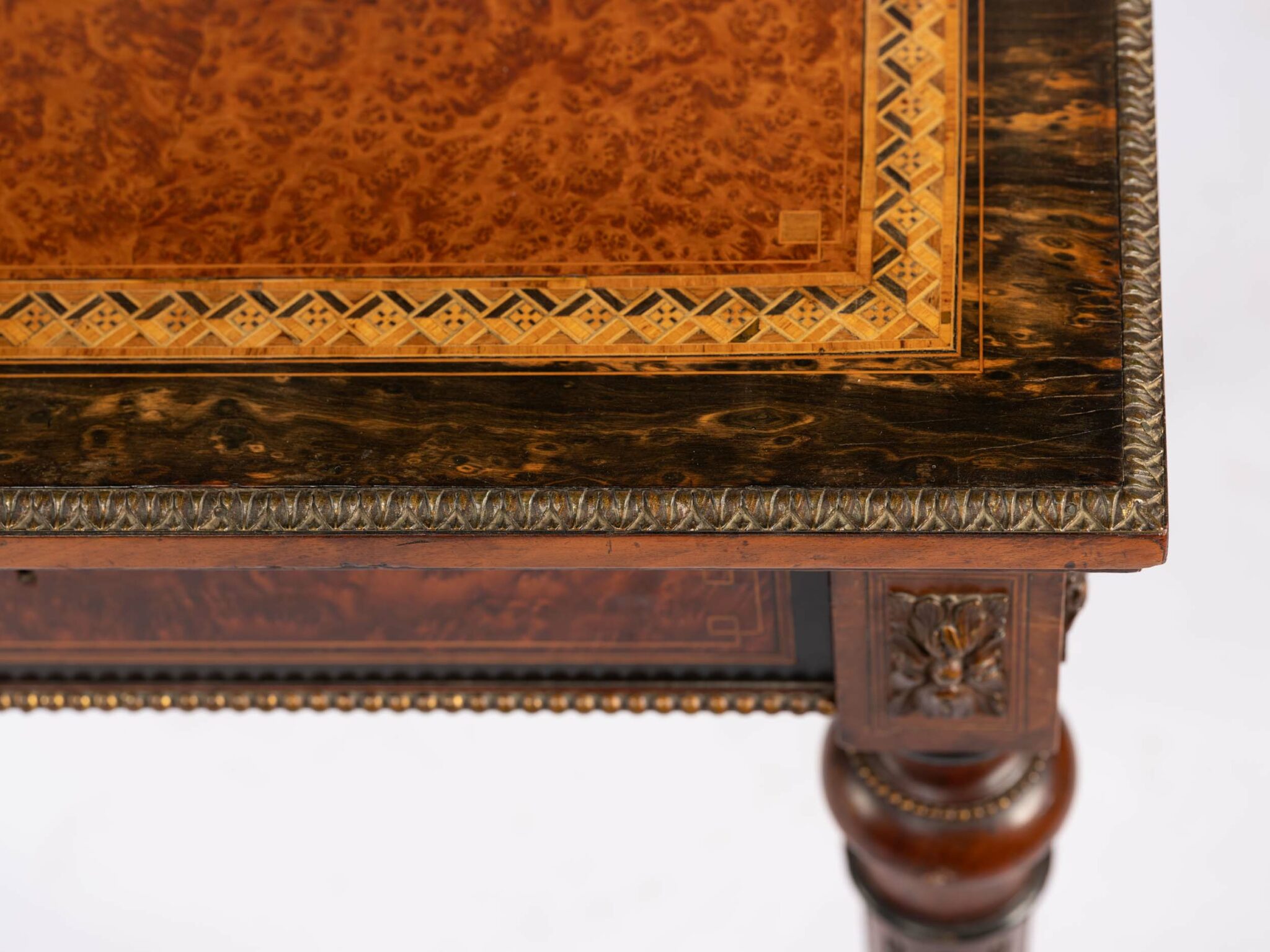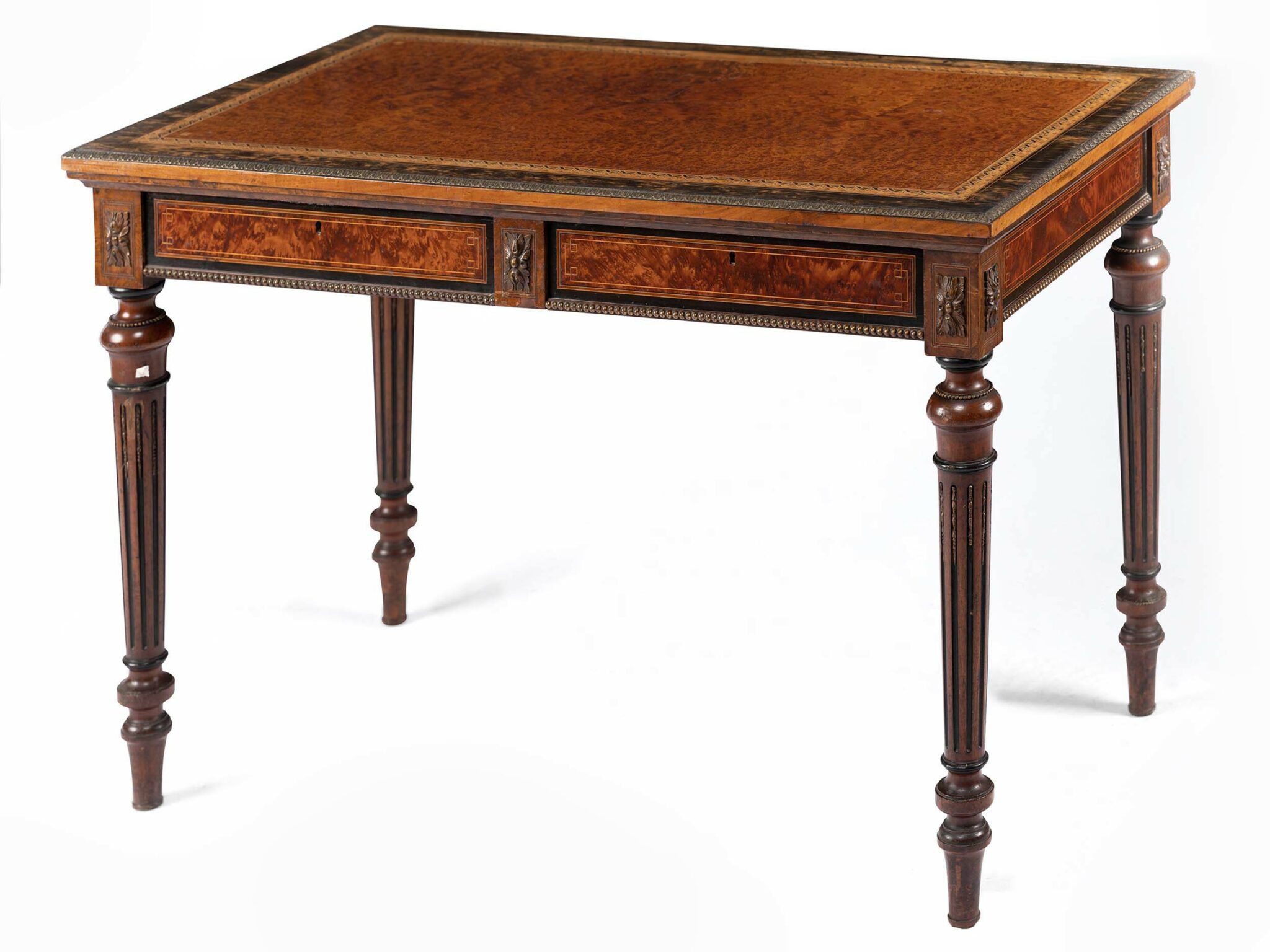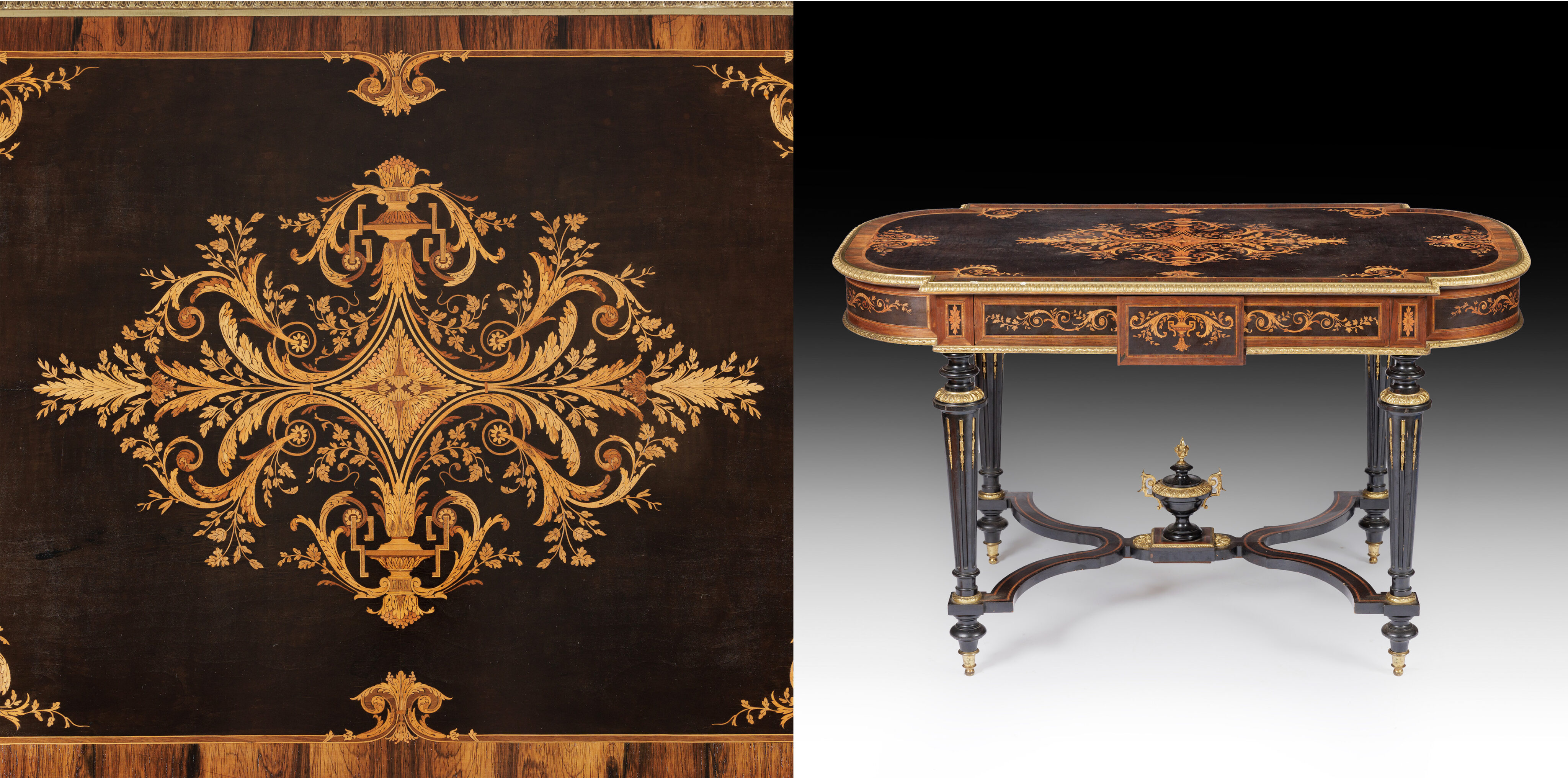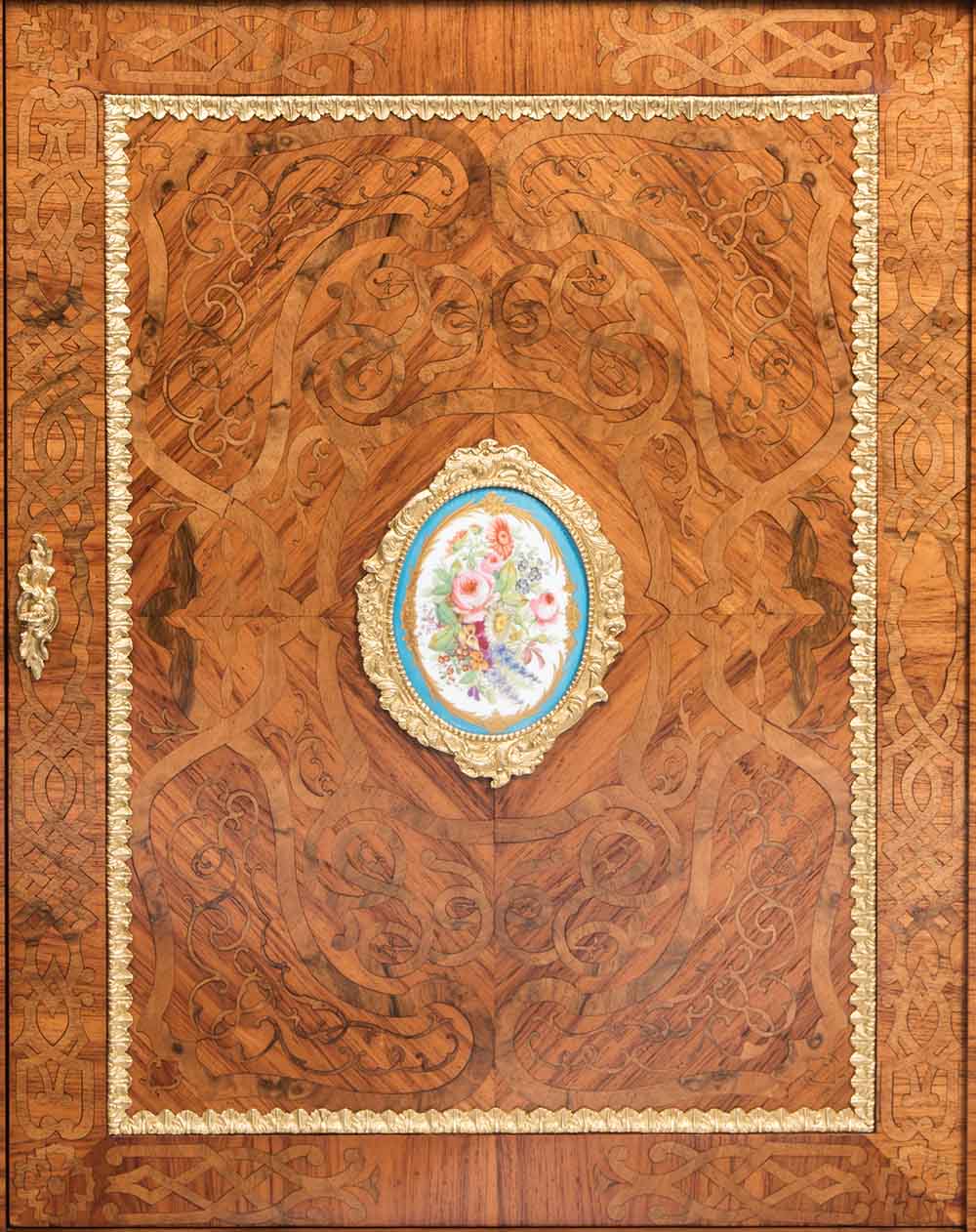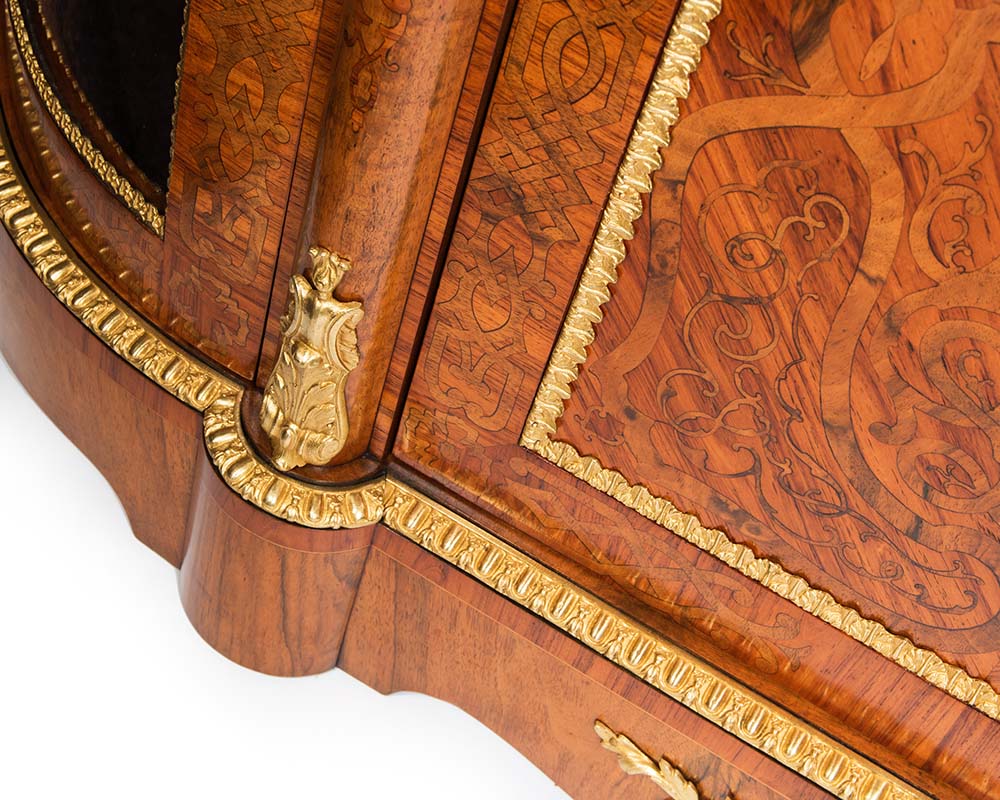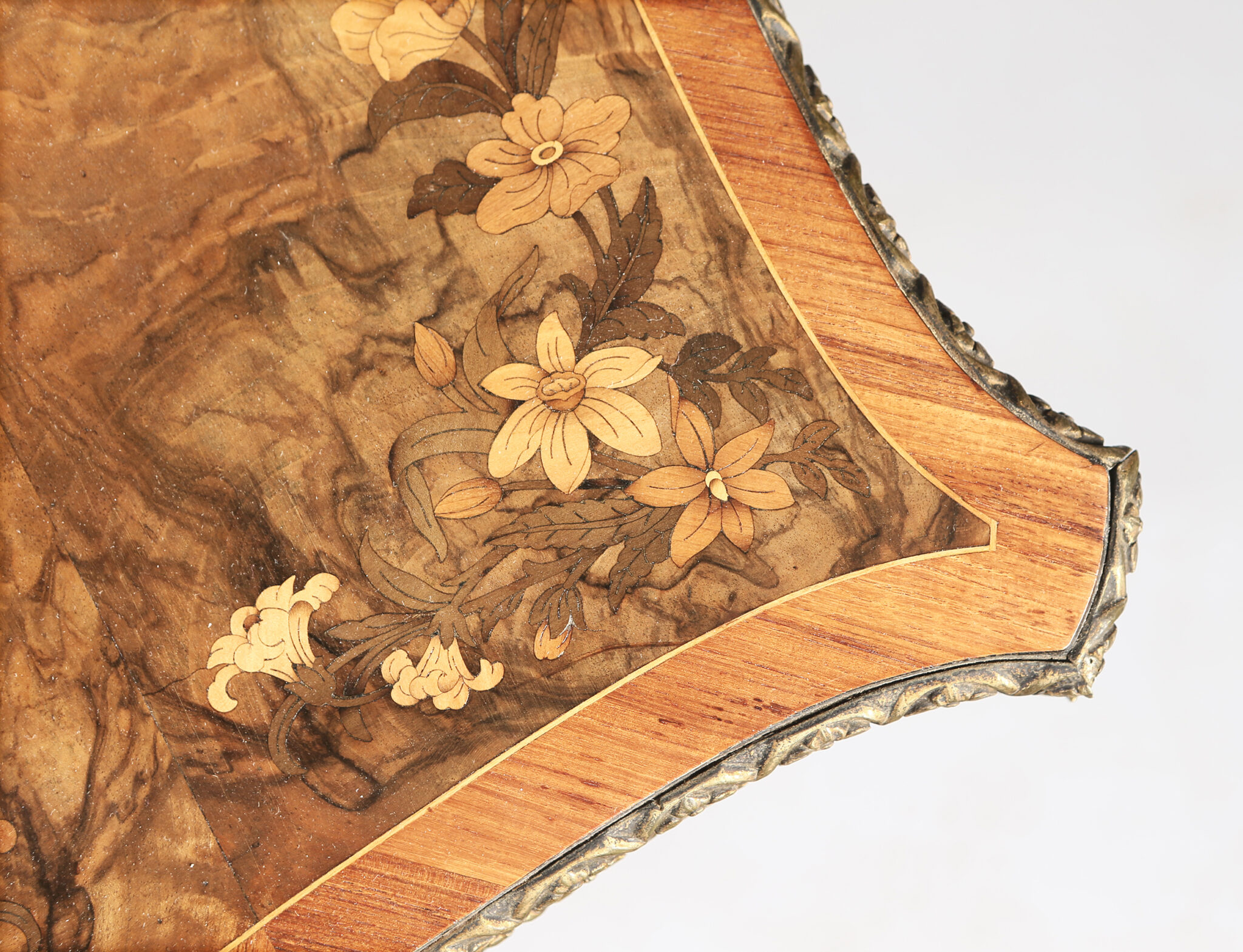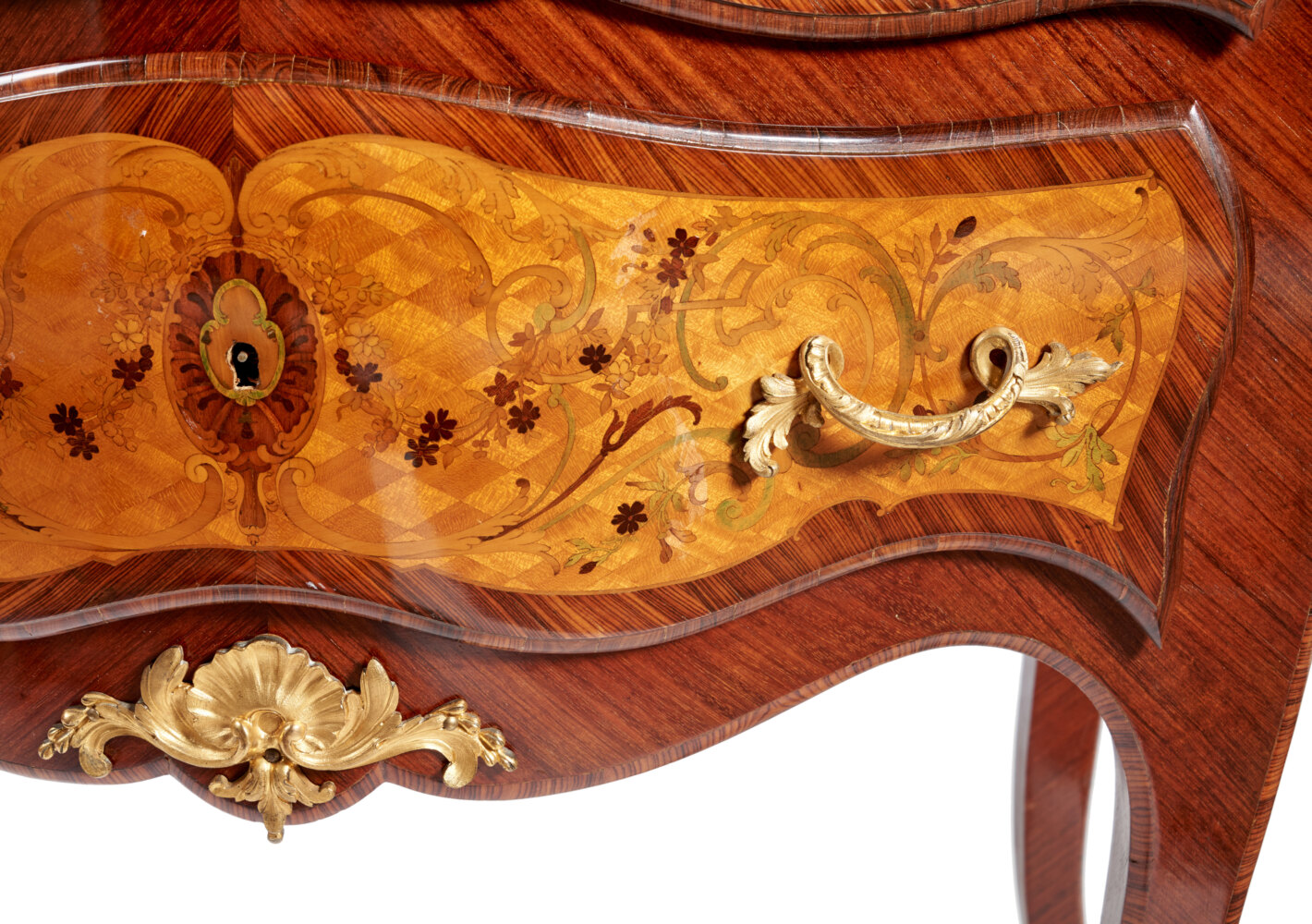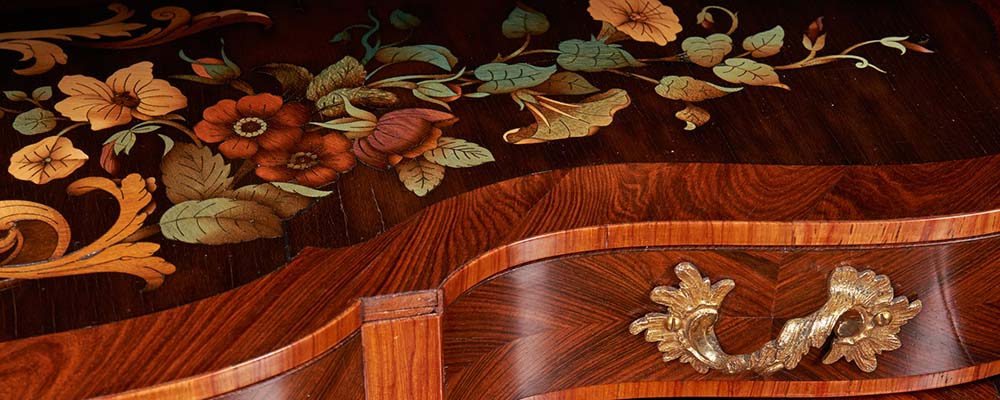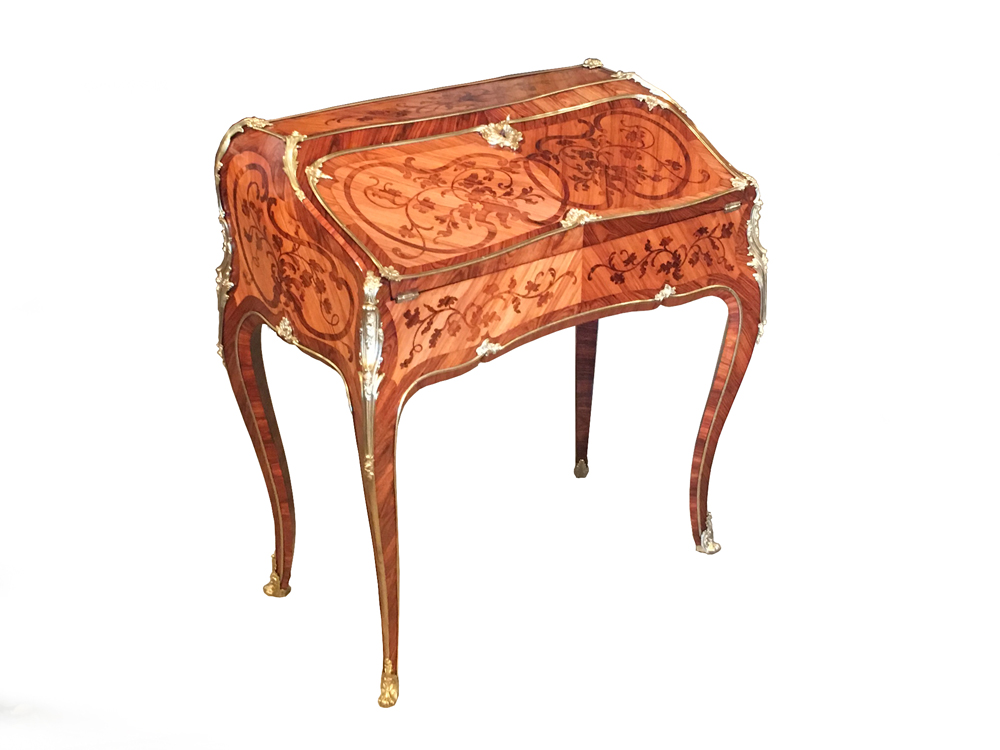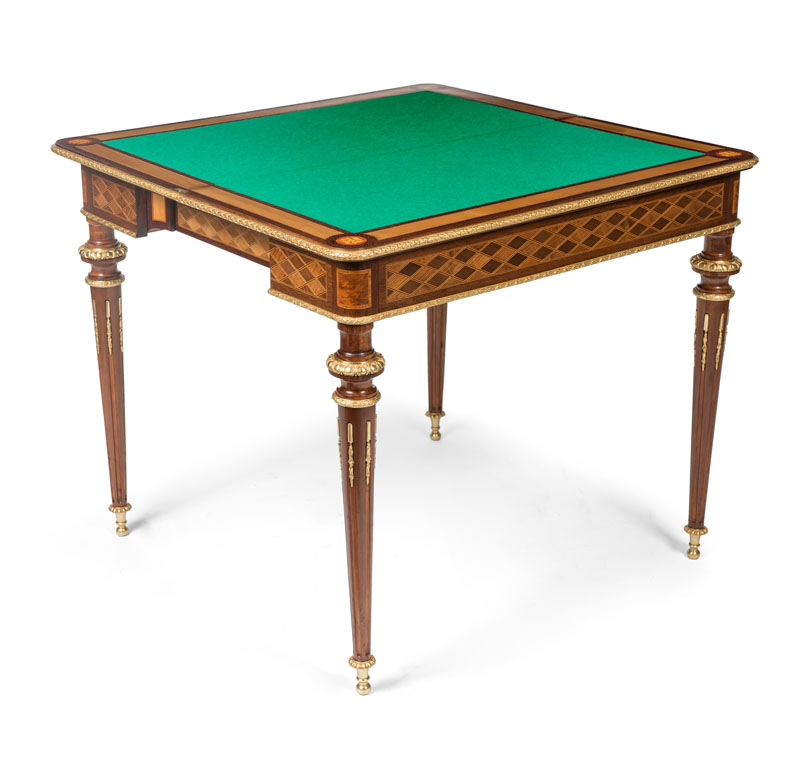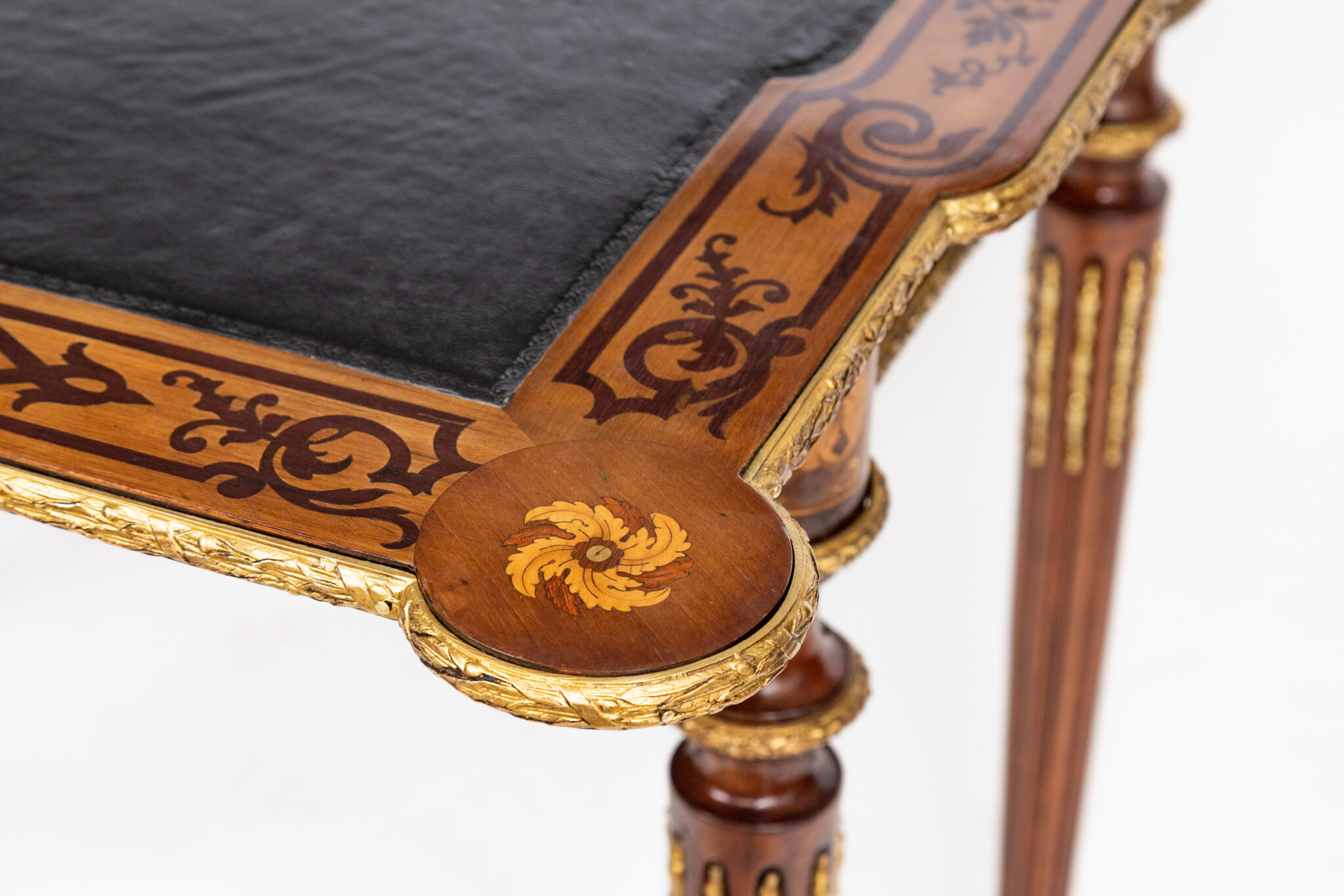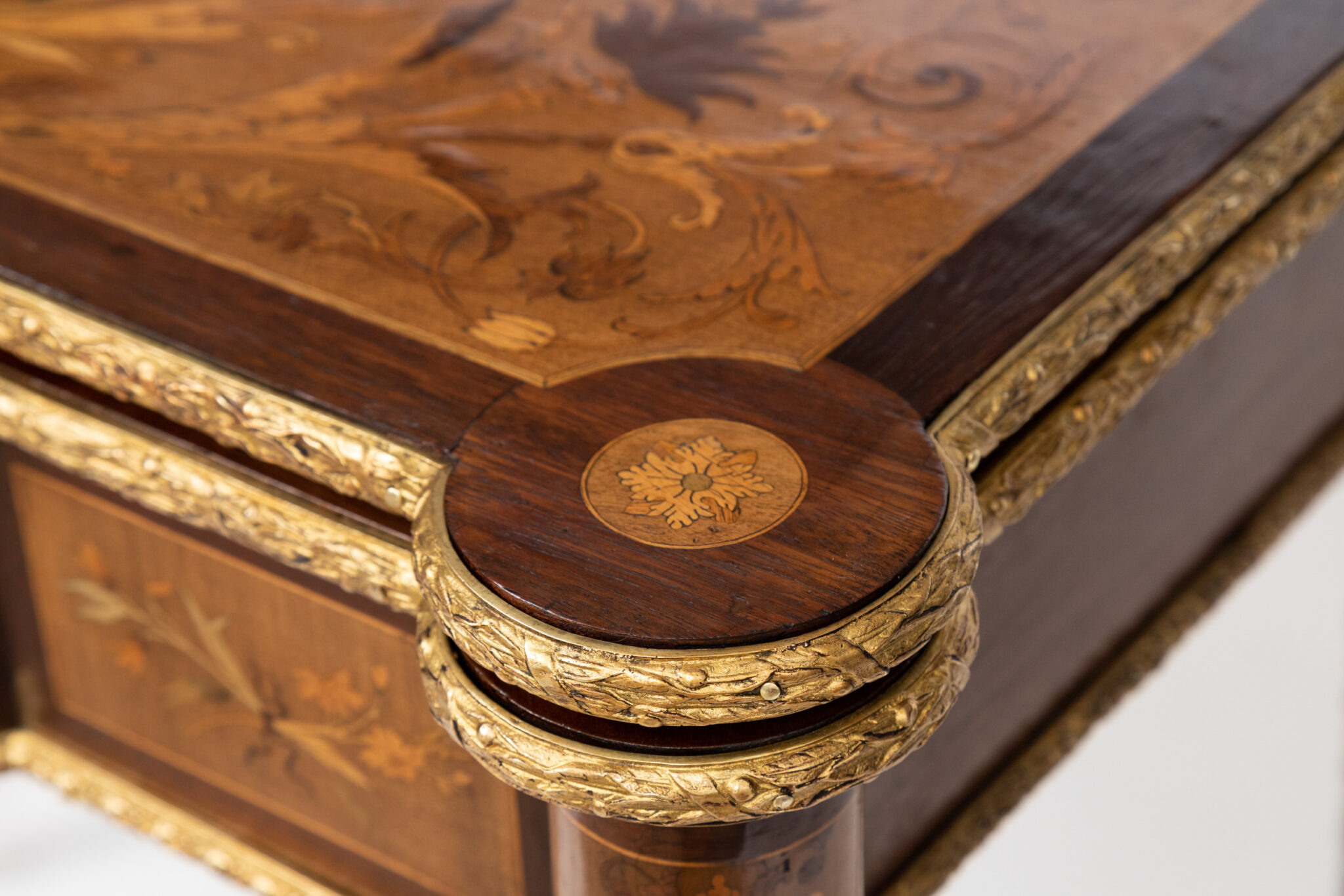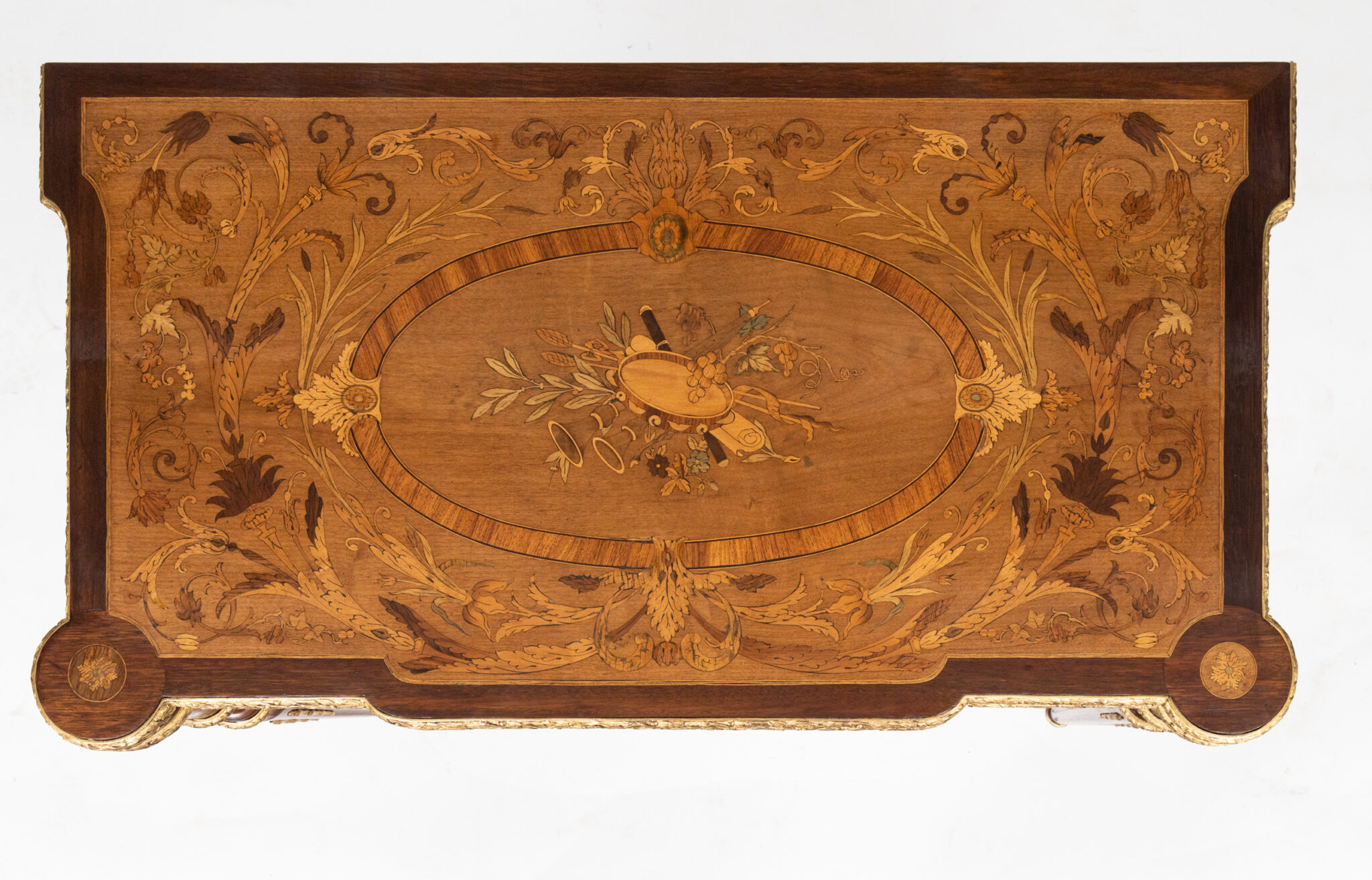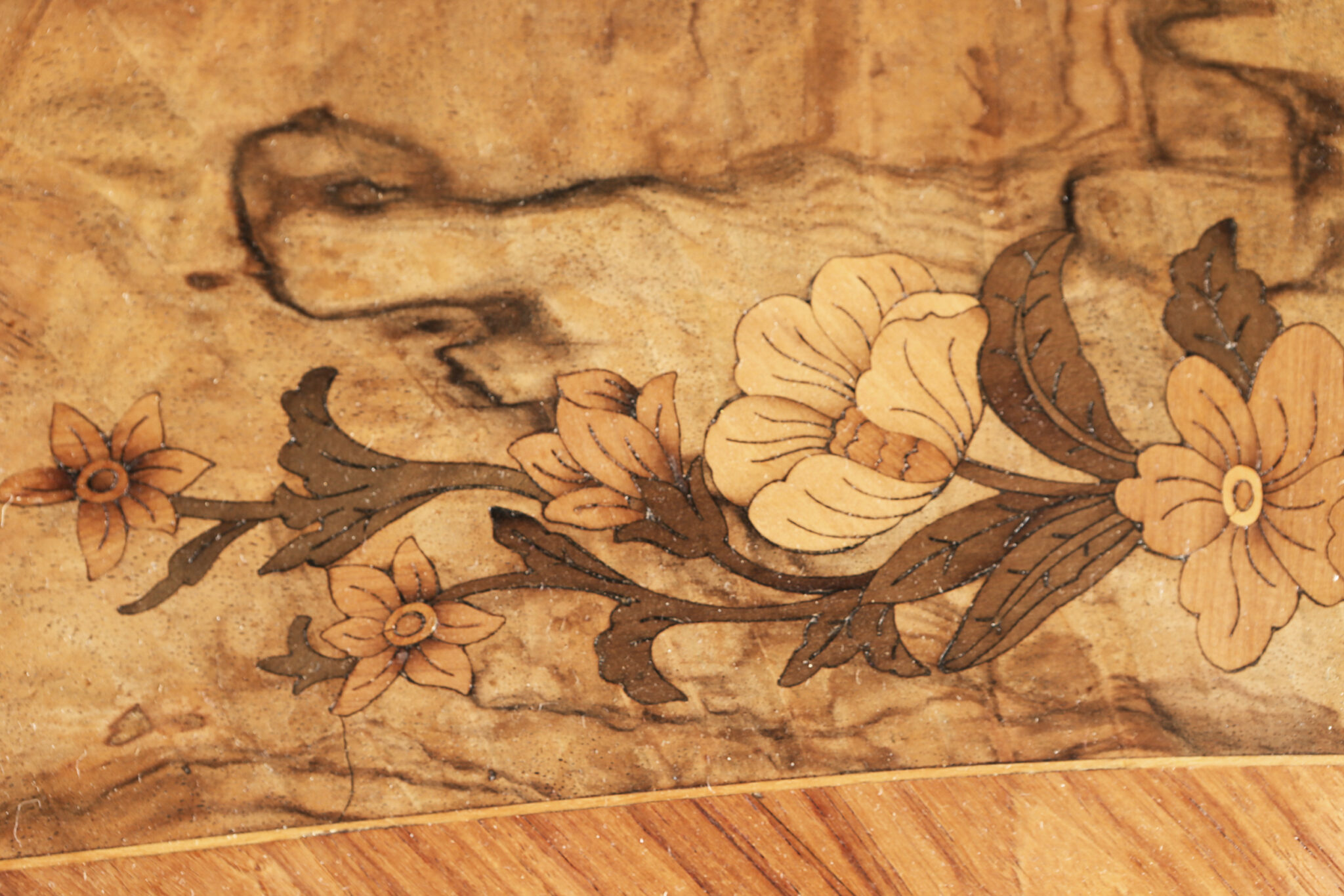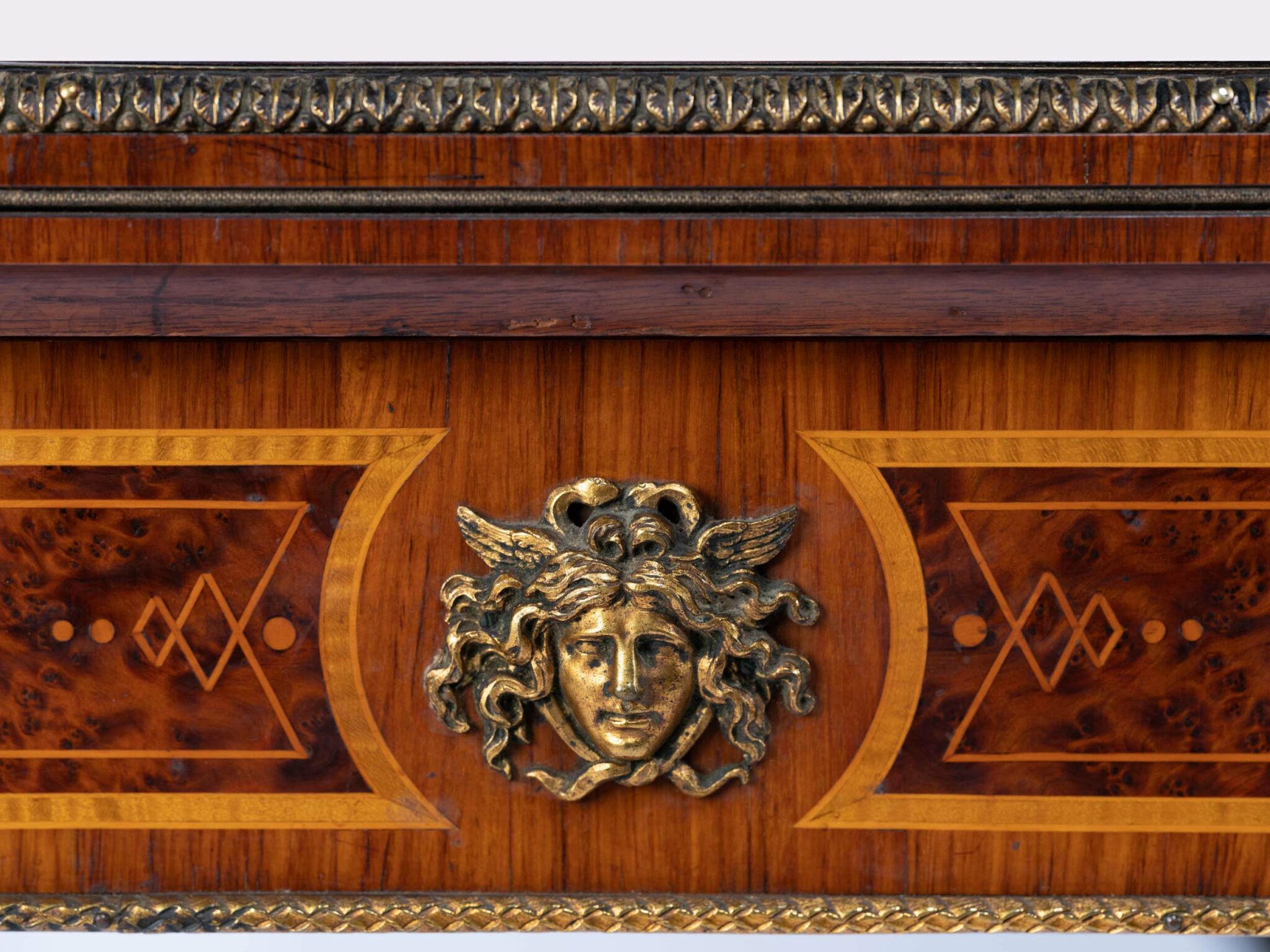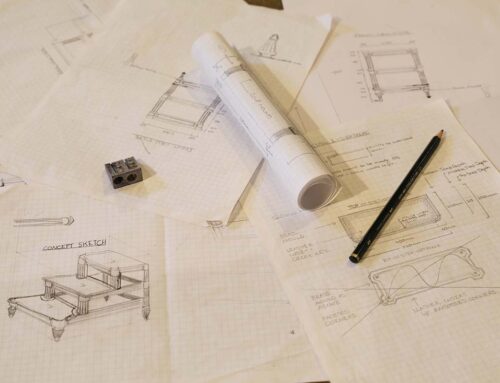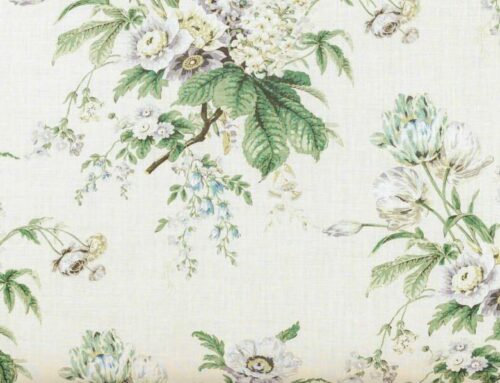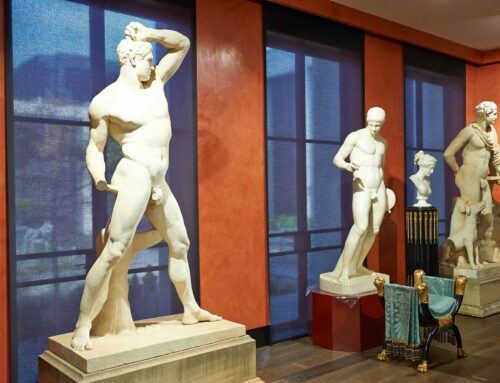Not all Antique Marquetry Furniture is Made the Same
We have been fortunate to acquire some exceptional writing tables over the past few months, all beautiful in their own right, however this one which we attribute to Holland and Sons, featured in our video below, stands out from its companions. Featured many years ago in Wallrocks Summer Exhibition of 2012, this remarkable writing table has found its way back to the showroom floor and we are reminded of why we fell head over heels all those years ago. Watch our video below to see why…
Like a beautiful piece of music, this piece is a wonderful example of its kind and a remarkable demonstration of fine antique marquetry furniture. The piece is so beautiful it in fact needs few words to describe it, for it does so all of its own accord. Well balanced, beautifully executed and made from the finest materials available, the quality of the writing table is exceptional. There are extraordinary details from the marquetry top to the parquetry stretcher, and beautifully tapering legs.,It is impossible not to marvel at the level of skill required to design and carve such a piece of furniture.
English made Cica 1860, with considerable French influence, the features of this kidney shaped leathered top table are contrasting colours of timber and grain, exquisitely ingrained patterns and imagery, with rich wooden textures.
A little history of marquetry…Holland and Sons Furniture
Historians believe that the ancient craft of intarsia is what gave birth to the practice of timber veneer and marquetry, which we see here, and became popular in France and Italy in the late 16th century. Intarsia was a common trade among the Egyptians who made ornate and pictorial mosaics by inlaying precious stones and other fine materials into blocks of solid wood, crafting items for the Nobility such as dinnerware or simply for decoration. It may also surprise you to know that the earliest evidence of marquetry still intact is a remarkable coffer from the city of Ur in Mesopotamia.
Considering the geographical location and the resources that were not readily available to the Egyptians, it is easy to understand what led to the introduction of the wood veneer technology. Egypt is a land awash with sand and dryness that make it difficult for trees to survive, thus, the Egyptians prized wood as a rarity and found that cutting thick slabs of wood into thinner sheets that could cover non-wooden surfaces seemed the best way to optimise this limited resource. However, as this was an extremely labour intensive task it set the price of the wood veneers in a very high bracket. As a result, it was only the wealthy in Egypt who could afford it.
Browse the gallery below.
Renaissance and Early Baroque in Europe & Antique Marquetry Furniture
Historians have documented the path of veneer production from Egypt to Greece and then to the Roman Empire. Based on archaeological evidence, the use of wood veneers gradually subsided after the end of the Egyptian era. It disappeared almost entirely up until the early middle ages but didn’t truly see its resurgence until the Renaissance where it flourished again in the form of woodwork.
In Imperial Rome and Persia, craftsmen would carve wood slowly and deliberately in half to one-inch pieces at a time. But a clever innovation by an anonymous German clockmaker in the late 16th Century completely turned things around – the jigsaw blade allowed woodworkers to produce the veneers for inlays at a faster rate as well as helped them make finer cuts with minimal waste. It was with this new tool that high-quality marquetry became an abundant and defining feature of furniture. By the mid of the 18th Century, Baroque furniture gave way to the more playful Rococo style, yet the magnificent woodwork remained. Richly coloured exotic woods were set with impressive inlays featuring the unique geometrical patterns, symmetrical lines, and elegant curves that we at Wallrocks find inspiring today, nearly two centuries later!
One of the striking features of this writing table is how its fine foliate marquetry appears to be naturalistically arranged to enhance the curves of the table itself. It is a wonderful example of the high-skill of 18th and 19th century craftsmanship.


